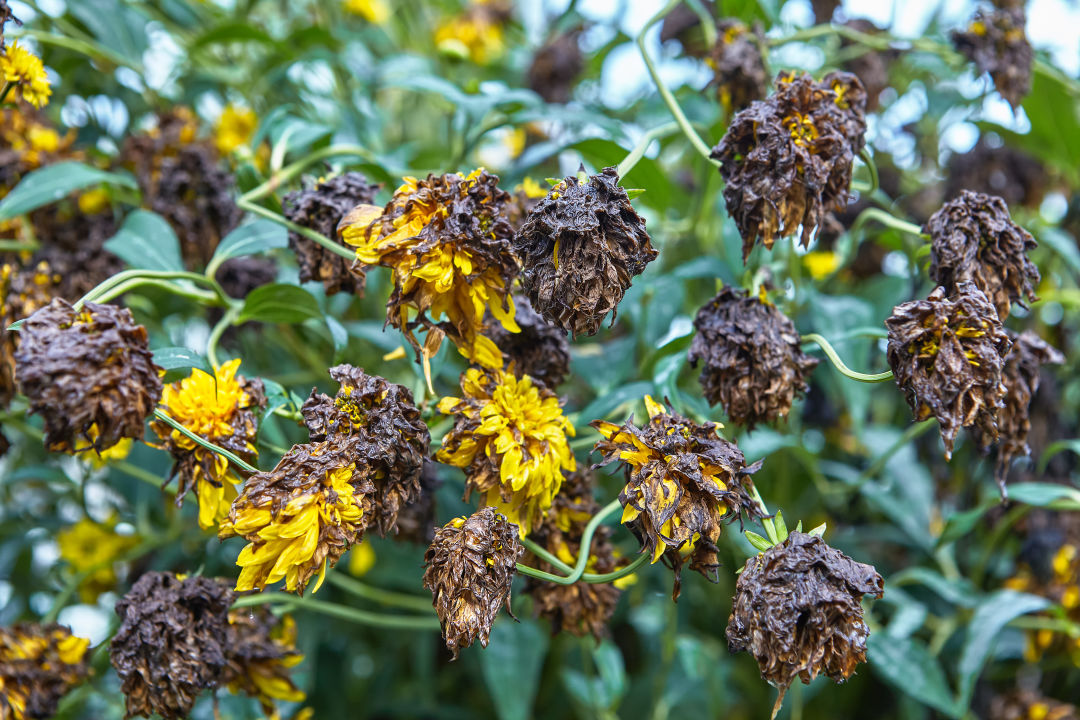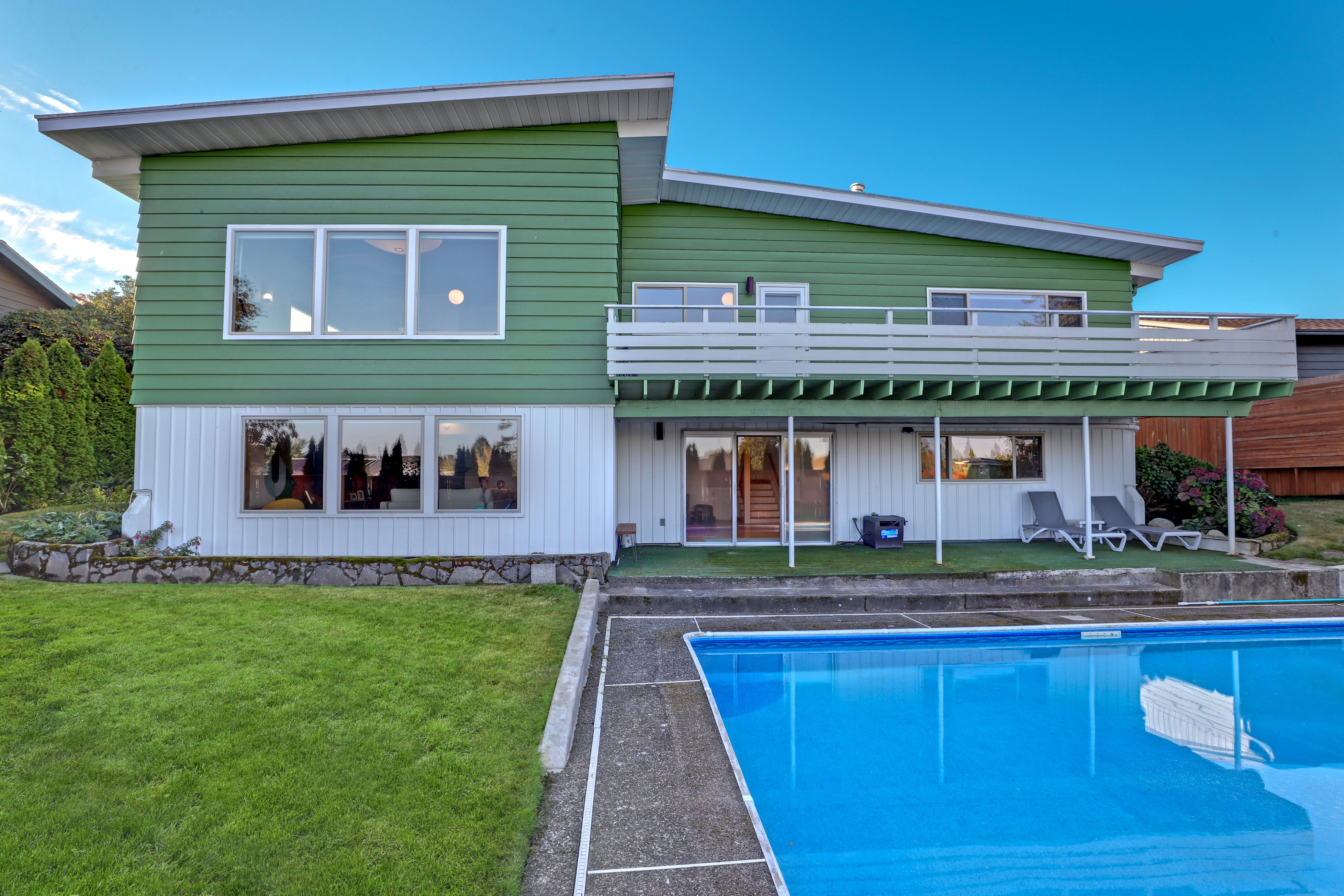How to Keep Your Garden Alive During the PDX Heat Wave

Read these tips from the co-owner of Garden Fever so your garden won't look crispy like this by the end of the heat wave.
Image: Courtesy Grigvovan
Here we go again, Portland. The heat’s here to stay, at least until Saturday, and while we can go inside into the air conditioning or a cooling center, the plants in our gardens aren’t so lucky. We talked with Lori Vollmer, the long-time co-owner of Garden Fever in SE Portland, to get some tips on how to keep plants happy during our latest spate of triple-degree temps.
Portland Monthly: What can happen to your plants if you don’t plan for the heat?
Vollmer: If you don’t plan for the heat, they can either run out of moisture sources in the middle of the day and can dry out, causing blossoms to drop on things like tomatoes, or they can get their leaves burned because they don’t have enough moisture to pull up from their roots to keep those leaves saturated and protected. You know, the worst case scenario is if you just planted something, and it’s not shaded.
Portland Monthly: What’s the biggest mistake a gardener can make during a heat wave?
Vollmer: Well, number one is [the thought] “If I get it in the ground, it’ll be more protected from the heat’ as opposed to just keeping in the shade and well-watered. That’s a mistake. And the other big mistake is at the end of the day, when it’s been hot all day, [thinking] “I better get out there and water.” When you really want to water is before the heat hits, so that the plant can take up that water and, again, protect itself during the worst parts of the day. The heat [is highest] at the end of the day, so that gives it a full, you know, eight hours plus to soak up that water… And then also, when it’s really hot out, there’s a lot of evaporation that happens, especially if you’re watering with a hose or if you’re doing an overhead watering, with a sprinkler or something. You want to make sure that all of the water gets down to the roots.
Portland Monthly: What are your other top tips?
Vollmer: If you have the ability to shade things like tomatoes or other plants, you want to make sure they don’t get burned. And if you think they might be susceptible, get either a bed sheet or some shade cloth… on the south or west side of the plant and shade it from the afternoon sun. [Also], we advise people not to plant anything until [temperatures] get back into the 80s. [Otherwise, it’s] already in a little bit of a shock situation because it’s gone from its container, whether it’s a little four inch or a gallon container, to the ground, and it’s trying to adjust, and it’s trying to do that at the same time of protecting itself from the heat. Many times it will not be able to do that, so you may totally lose that plant.
Portland Monthly: For those who don’t have air conditioning, what should they do with their houseplants? Do they need to move them away from the window?
Vollmer: Generally speaking, house plants are fine as long as they’ve been properly watered like normal. You could do a fan so you have a little bit more air circulation. And you know, at the store for all of the tropical leafy greens, not the cactus or begonias or fuzzy leaf things, but all the tropical leaf things, we mist them with just a water misting bottle to get a little bit more humidity in the air… That humidity is protecting them from losing a lot of moisture and the leaves drying up. If they are right up against the window and they are, again, a leafy tropical, you may want to pull them back so they don’t have as much reflected heat. About three feet or so… [Nearby buildings] bounce the heat and sun right back on it, and the window’s sort of going to become a magnifying glass. Remember when you were a little kid and you put the magnifying glass over a poor little weed and it sizzled? Same kind of theory.
Portland Monthly: What plants do the best in heat?
Vollmer: Plants that do best in the heat are more thick leaved and plants that are adapted to Mediterranean climates, like Manzanitas… Strappy leaves like crocosmia do really well, red hot pokers, kniphofias. I think that probably the thickness of the leaf [matters] because its strappy and the light doesn’t shine directly on a very flat wide surface. It's very narrow so it goes right through it, and it diffuses itself.
Portland Monthly: And which do the worst?
Vollmer: Definitely the plants that are supposed to be grown in the shade that aren’t being grown in enough shade, like ferns and rhododendrons. We’ve seen a lot of burning on rhododendrons from afternoon heat. There are some native [plants], like the mahonia, that if they are not in afternoon shade, they will burn.




